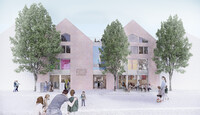
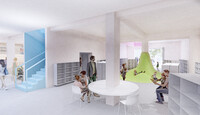
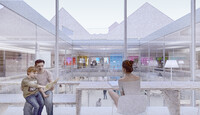
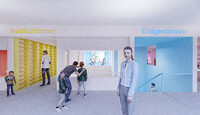
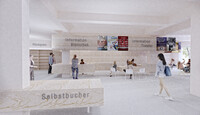
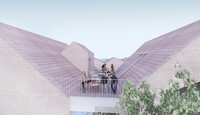
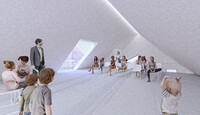
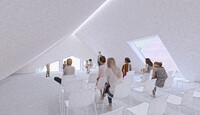
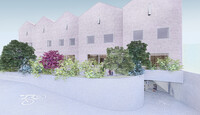
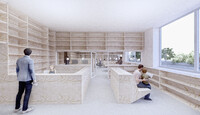
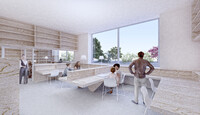
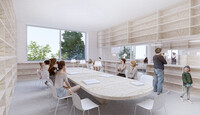
Houses of Culture - Library, Archive, Theatre and more
We find a place in the heart of the city that had all possibilities, the quality of which was gambled away in the 1960s and is therefore an architectural no man’s land today. The discussion is about an existing, identityless building without any reference to history or the surrounding urban landscape - emotionally a case for total demolition. The most extensive preservation of the building is therefore unusual, but above all logical and pragmatic, because it saves considerable costs and creates the necessary openness inside for a polyvalent use and an exciting, authentic spatial effect through skilful interventions in the substance. In urban planning, respect for the qualities of the environment is the necessary starting point, but not the end point for the design. The new skin of the facade over the old structure gives the building a balance compared to the Weser Renaissance town hall and, through its openness, guarantees the relationship between the city and public uses in the building. Neighbouring architectural forms are taken up and further developed. The historical traces of the parcelling and the passage through the building are not lost in the new building either. The aim is to create a diverse range of public spaces for all Nienburgers on 5 floors. For the city, the threshold-free, open architecture and the constant fluctuation of users to be expected means a lively centre in which culture and trade complement each other and establish their mutual success.